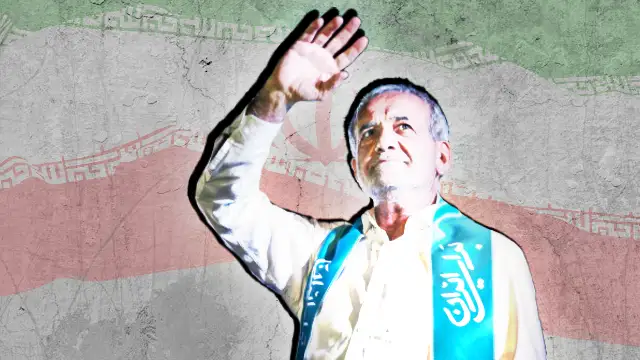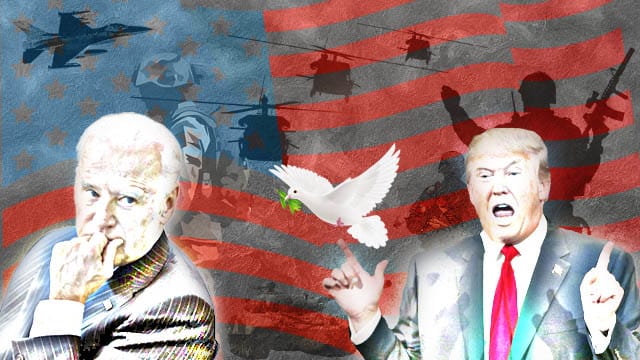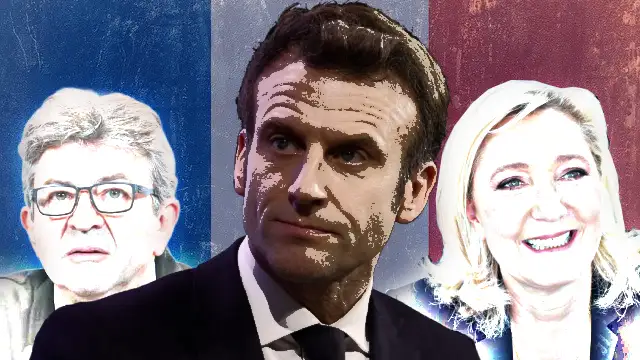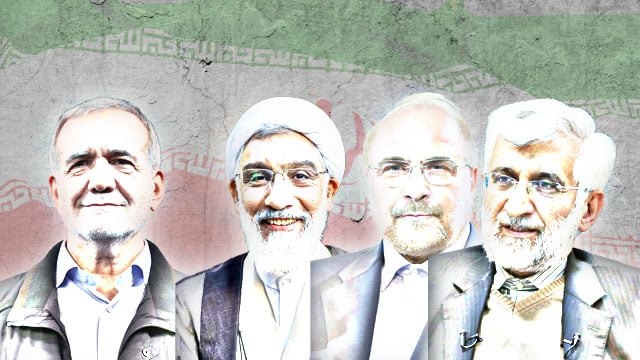Retaining the trend of the first round of Iran’s presidential elections on June 28th, which led to a run-up poll between the two top candidates on Friday, July 5th, Dr Masoud Pezeshkian (69), a cardiac surgeon-turned-politician, defeated his rival Saeed Jalili by 2.84m ballots.
Dr Pezeshkian, the moderate candidate, secured 53.66% of the total 30.53m votes polled on Friday vis-à-vis Mr Jalili’s 44.34%.
Despite crossing the threshold of 50% votes, which is mandatory for any candidate to win Iran’s presidential elections, Dr Pezeshkian’s victory has raised several questions on the political situation prevailing in the Islamic Republic, the future trajectory of its economy and diplomacy, and what would be the status of the president-elect’s relationship with the country’s clergy.
The political problem highlighted by Iran’s presidential elections
The first round of Iran’s presidential elections was followed by the run-up elections as neither of the top two candidates could garner more than 50% of votes.
However, one of the reasons behind none of the candidates getting more than 50% of votes was the lower voter turnout, which didn’t let a clear picture emerge regarding the mood of the nation.
Now, while the total voter turnout in the first round of Iran’s presidential elections was a little more than 39%, in the run-up, there was over a ten percentage point increase as voter turnout reached 49.8%, according to the IRNA.
Even though Iran’s supreme leader, Supreme Leader Seyyed Ali Hosseini Khamenei, expressed happiness over the increase in voter turnout, which has been falling in recent elections, the increase isn’t impressive.
Because out of 61.3m registered voters in Iran—with a total population of around 85m—only 1.63m voted in favour of Dr Pezeshkian, it can be concluded that the president-elect has a national approval rate of only 26.73%.
Nearly three out of four Iranians don’t endorse Dr Pezeshkian’s presidency.
One of the reasons behind this apathy of the voters to come out and cast a vote in favour of a candidate they prefer can be attributed to the lack of democratic freedom in Iran, due to the tight grip of the clergy over its polity and society.
Moreover, although Dr Pezeshkian has promised a new path for Iran and appealed to the people to support him on the “difficult road ahead”, it’s known to political experts that this moderate president-elect, who was a health minister in former president Mohammad Khatami’s administration from 2001 to 2005 and is perceived close to him, isn’t a changemaker per se.
Dr Pezeshkian is an insider of the tightly-ruled Iranian theocracy and, despite the supreme leader’s alleged fondness of Mr Jalili, he shares a bonhomie with him.
This duality, of projecting himself as a harbinger of change while being a close ally of the ruling elite, made the presidential elections unappealing to many Iranian voters.
Iran’s volte-face
A flashback to the last week of May would show the world an image of Iran where hundreds of thousands of Iranians came down on the streets to mourn Ebrahim Raisi, the hardliner president killed in a mysterious helicopter crash on May 19.
Mr Raisi’s name was chanted all over the country. The funeral was massive and Mr Khamenei himself led the final prayers.
The optics were used by Iran’s state media to project the massive support Mr Raisi enjoyed, especially due to his pragmatic foreign policy that made Iran a power to reckon with in the region.
However, a month after his funeral, Mr Raisi’s hardliner approach faced a drubbing in the election as Mr Jalili, who promised to carry forward the late president’s legacy, couldn’t garner as many votes as Dr Pezeshkian.
Even though Mr Jalili had Mr Khamenei’s backing and managed to polarise the elections between him and Dr Pezeshkian in the first round, he couldn’t reach the threshold.
While it was perceived that by learning from the experience of the first round, the clergy would put its weight behind Mr Jalili and help him win the run-up, that didn’t happen.
Unlike many top ‘democracies’ of the world, where results are altered through manipulation and election results often are challenged in courts, Iran’s democracy, despite the tight control of the clergy, showed more robustness.
The problem of ‘reforms’
One of the major problems Iran now faces is its sloth economy and the need to get out of the unilateral, illegal sanctions imposed on it by the US-led collective West.
Dr Pezeshkian promises to restart the stalled Joint Comprehensive Plan of Action (JCPOA), which is a deal between the US-led collective West and Iran over the latter’s controversial nuclear programme.
The JCPOA, a brainchild of former moderate president Hassan Rouhani, was started in 2015, the fag end of former US president Barack Obama’s tenure and reached a stalemate in 2018, when former US president Donald Trump withdrew his government from it.
Although the late president discarded the JCPOA, Dr Pezeshkian is hopeful that he can restart the negotiation and win significant gains for Iran.
However, any such move would undermine Iran’s current dominant position in West Asia, where its conflicts with the neighbouring Saudi Arabia and other gulf monarchies are nearly resolved and through its active support to the ‘Axis of Resistance’ against Israel, it has also won global fame.
The US and the West won’t allow Iran to have JCPOA negotiations—in case the Democrats manage to sweep the 2024 elections again—without stalling its support for the ‘Axis of Resistance’ and snapping ties with the China-Russia bloc.
Under Mr Raisi, Iran became closely allied with the China-Russia bloc, which promotes multipolarity and multilateralism. It’s now linked with international organisations like the Shanghai Cooperation Organization and the multilateral platform BRICS+.
With Dr Pezeshkian’s approach, Iran stands the chance of losing its strategic independence and may have to stop aiding the ‘Axis of Resistance’ in Iraq, Lebanon, Palestine and Yemen.
Moreover, Dr Pezeshkian’s economic reform agenda may jeopardise Iran’s goal of achieving economic self-sufficiency and doing foreign trade in local currencies by bypassing the US dollar.
Potential conflict
Though the supreme leader congratulated Dr Pezeshkian upon his victory in Iran’s presidential elections, it’s unlikely that he’d support the reform measures of the president-elect.
As the Ayatollah can veto any potential reform programme, Dr Pezeshkian has noted that the path ahead won’t be smooth for him.
“Dear people of Iran, the elections are over and this is just the beginning of our cooperation. The difficult path ahead will not be smooth except with your companionship, empathy and trust,” he wrote in a post on X.
“I extend my hand to you and I swear on my honour that I will not leave you alone on this path. Don’t abandon us,” the president-elect concluded.
“You created an opportunity for Iran and brought back hope and joy to the atmosphere of dissatisfaction, distress, and melancholy in society. I am grateful to all of you,” Dr Pezeshkian said on Saturday at the Mausoleum of the late Imam Khomeini, the founder of the Islamic Republic.
“The great test of navigating Iran through the constraints, challenges, and crises lies ahead of us,” he added.
Understanding the complex challenges posed by the Iranian clergy to his moderate agenda, the president-elect has claimed that he will take an active part in selecting the successor to the ailing 85-year-old Ayatollah.
In case Dr Pezeshkian manages to have a major say in the choice of a successor, who can back his moderate approach, then it won’t take him much time to implement his plans.
Whether those plans would do more harm to Iran is yet to be seen. With a president-elect who is supported by only a quarter of the country’s registered voters, a clergy that doesn’t want citizens to enjoy too many civil rights and an ailing supreme leader trying hard to retain Iran’s defiant stance on the global arena, the Persian nation faces a very uncertain future.
While his inauguration is due between July 22nd and August 5th, Dr Pezeshkian knows he doesn’t have a road of rose petals ahead of him. Rather, he has to traverse through a treacherous trajectory.
The ultimate outcome of Iran’s presidential elections is yet to be seen.




